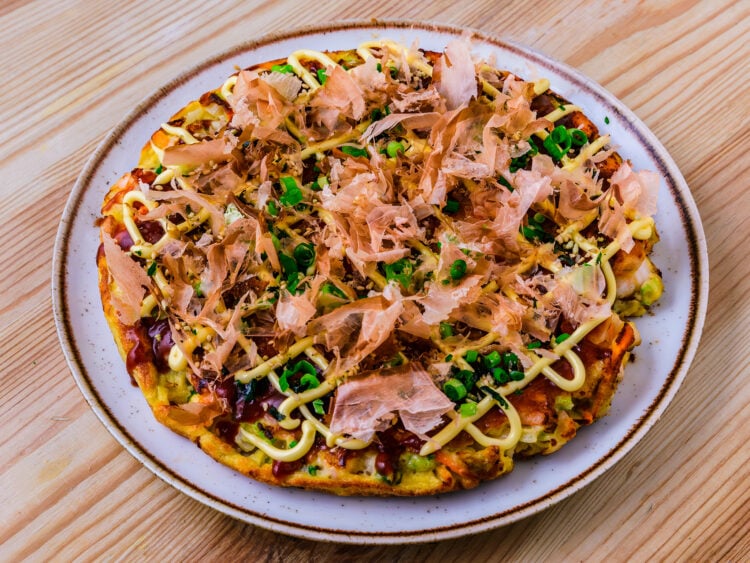Discover the recipe for the famous Okonomiyaki, a Japanese cabbage pancake topped with meat, seafood, and a multitude of flavors. My authentic recipe will transport you to the lively streets of Osaka.
What is Okonomiyaki?
Okonomiyaki (お好み焼き) is sometimes called the “Japanese pizza”, but it’s actually a savory Japanese pancake filled with Chinese cabbage. Its batter requires flour and eggs, mixed with shredded cabbage and occasionally enriched with additional ingredients such as shrimp or squid and even cheese!
Once cooked, the okonomiyaki is topped with an assortment of condiments: okonomiyaki sauce, Japanese Kewpie mayonnaise, dried seaweed, and dried bonito flakes.
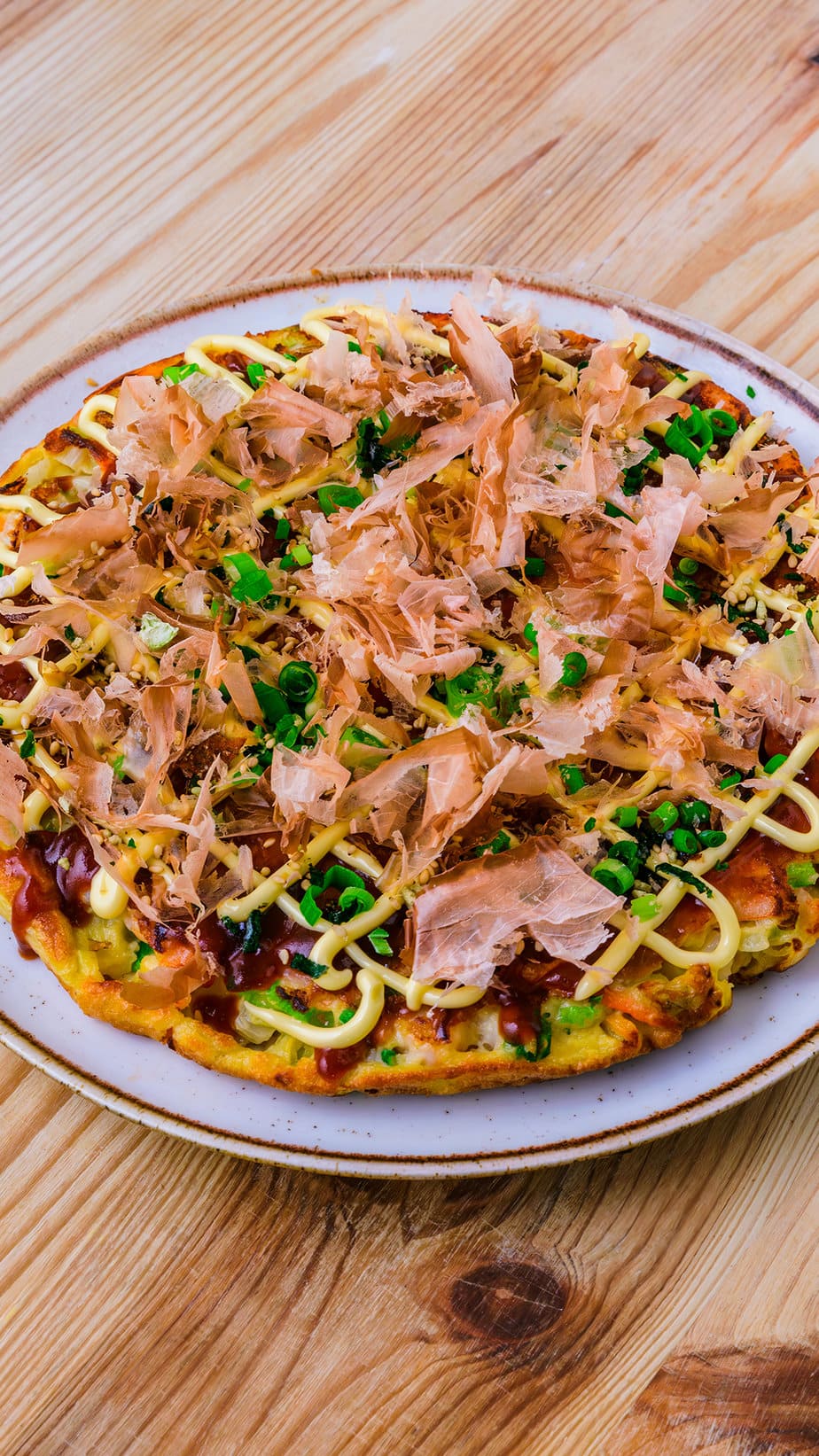
The great adaptability of this dish allows for complete customization, whether you avoid pork or opt for other proteins. The variety of fillings and toppings is endless, which perfectly illustrates the meaning of its Japanese name: “grilled to your liking” – Okonomi (to your liking) and Yaki (grilled).
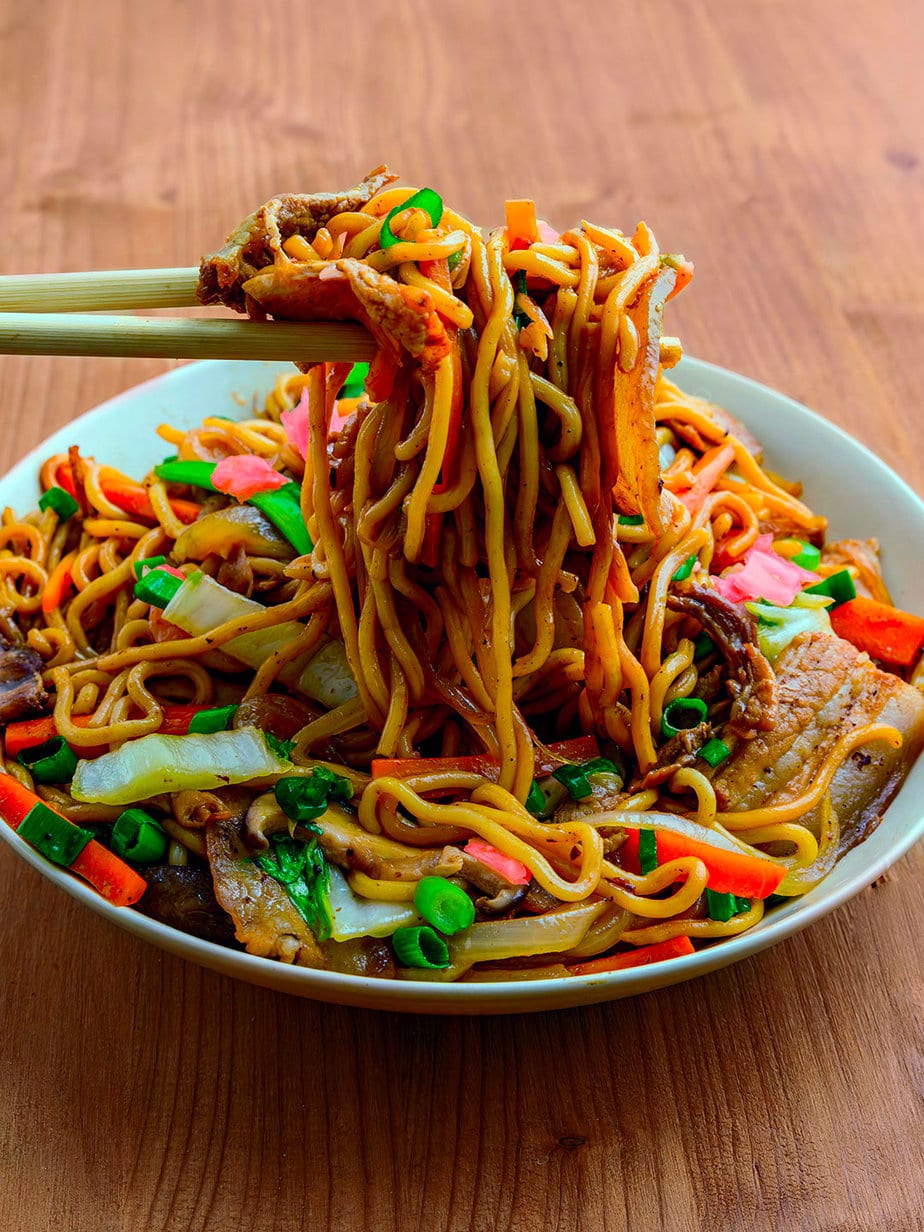
The Traditional Way of Serving Okonomiyaki in Restaurants
Okonomiyaki is traditionally prepared on a teppan, a large griddle, typically in places specializing in this dish. When you take a seat at the counter, the experience is immersive: watch the chef in action, skillfully handling the teppan, before precisely placing the still-sizzling okonomiyaki in front of you, ready to be enjoyed directly from the griddle.
Choosing to sit at a table also offers a unique experience, as the okonomiyaki is brought to you directly on a teppan integrated into the table, similar to Korean barbecue.
For fans of interactive cooking, some establishments offer the opportunity to take the reins and prepare your own okonomiyaki, always with the attentive support of the staff, for a memorable and personalized evening.
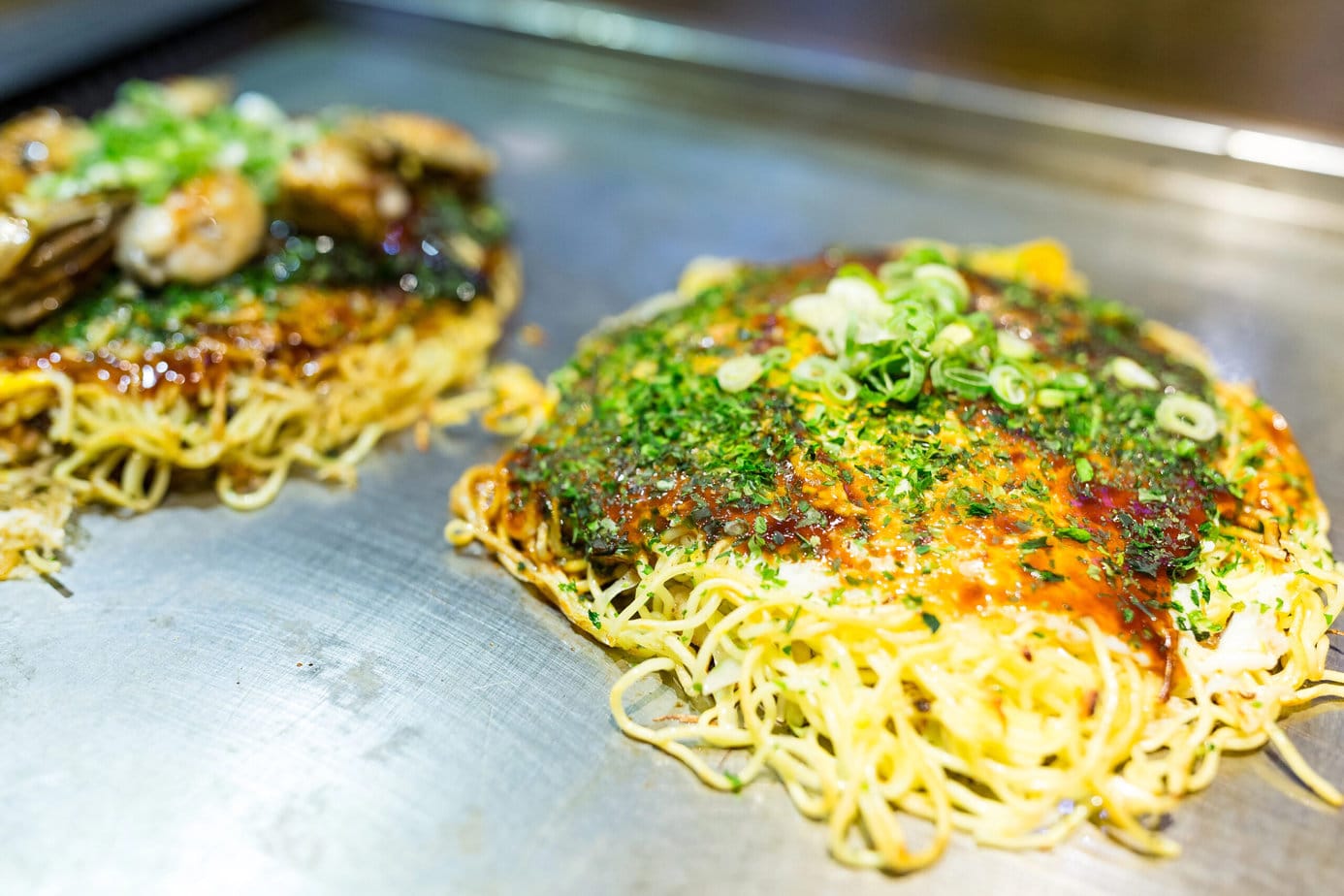
Variations of Okonomiyaki
In Japanese, “okonomiyaki” means “Grilled as you like it”. This name well reflects the flexibility and diversity of recipes that vary greatly from one Japanese family to another.
Thus, you have complete freedom to adapt the recipe according to your preferences without fear of offending anyone. Whether you can’t eat pork or are allergic to seafood, simply replace these ingredients with your favorites.
Among the many variations of okonomiyaki, the Hiroshima version, enriched with noodles and an egg, is particularly popular. There’s also monjayaki, a more “runny” version of okonomiyaki, with a texture reminiscent of melted cheese. More formally:
- In Osaka, the approach is to mix all ingredients before cooking
- In Hiroshima, okonomiyaki is built layer by layer, starting with the batter base, followed by cabbage and other ingredients, in a method reminiscent of pizza.
- Modan-yaki represents the philosophy of “more is better”, with fried yakisoba or udon noodles generously piled on top.
- Negiyaki, on the other hand, emphasizes green onions and offers a much thinner pancake, reminiscent of Chinese scallion pancakes.
A Few Ideas for Variations According to Your Tastes
Cabbage:
- Napa: tender and creamy center
- Green: firmer texture
Proteins:
- Sliced pork belly
- Oysters
- Minced chicken
- Chopped squid
Vegetables:
- Grated yams
- Grated zucchini
- Sautéed and chopped mushrooms
Crispy:
- Add 2 to 3 tablespoons of cornstarch to the batter for an extra crispy exterior.
The Main Ingredients of Okonomiyaki
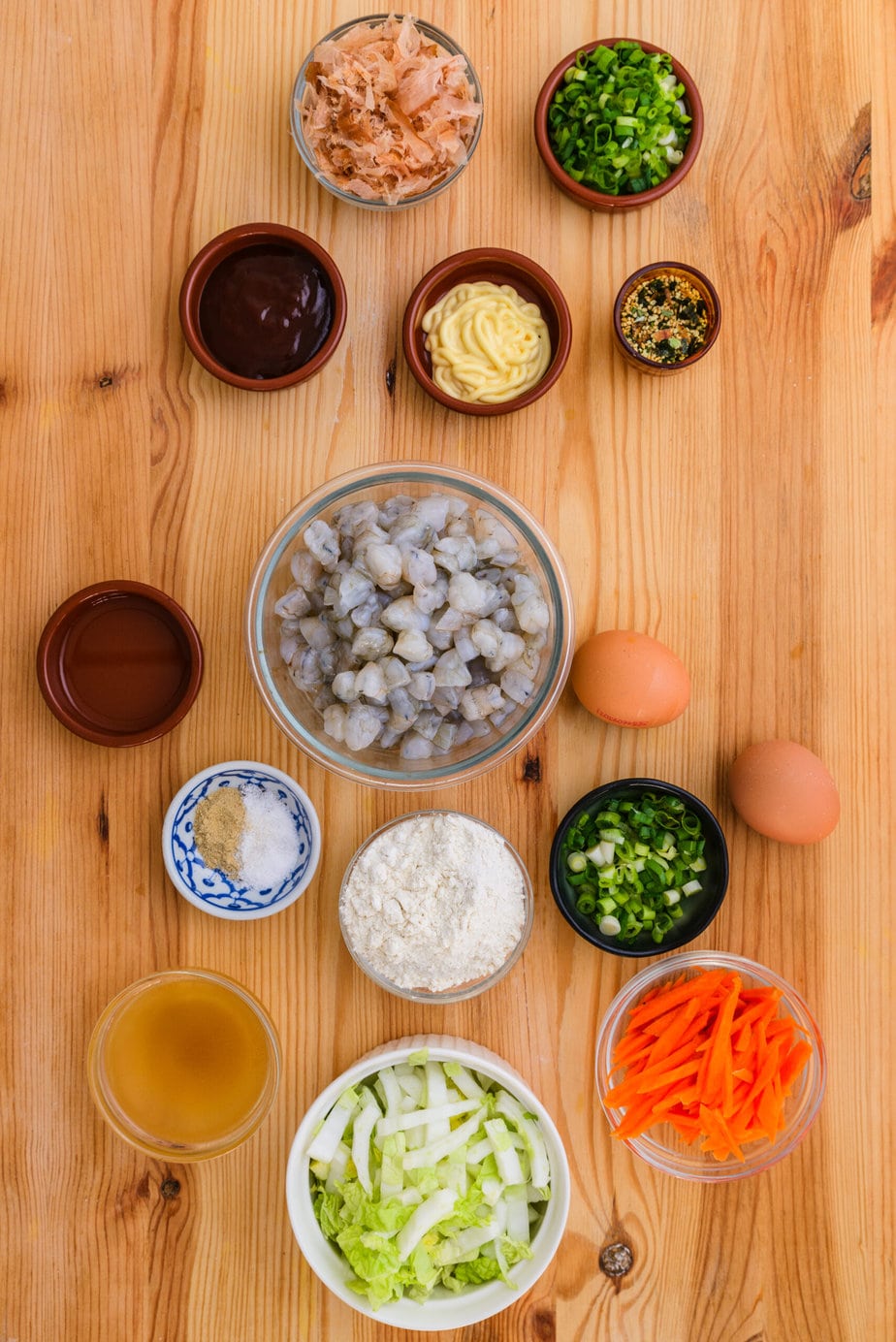
Chinese Cabbage: A key ingredient for texture and freshness, Chinese cabbage is finely chopped and incorporated into the batter or added between layers to give height and volume to the okonomiyaki. Its light flavor complements the other ingredients without overpowering them.
Dashi: Traditional Japanese broth that serves as a base for many dishes, including okonomiyaki. Made from dried bonito and seaweed, it brings umami depth and a subtle nuance that enriches the okonomiyaki batter, giving it a complex and rich flavor.
Furikake: A dry Japanese seasoning composed of a mixture of small pieces of bonito, sesame seeds, seaweed flakes, sugar, and salt. Sprinkled on okonomiyaki before serving, it adds a crunchy touch and a boost of umami flavor.
Katsuobushi: Thin flakes of dried, fermented, and smoked bonito, known for their essential role in Japanese cuisine. On okonomiyaki, they add a unique texture and a smoky, umami flavor. Under heat, they appear to dance, adding a fascinating visual element to the dish. They can also be found on tamago kake gohan, for example.
Kewpie mayo: Japanese mayonnaise that is sweet and rich, distinguished by its slightly sweet taste and creamy consistency. Unlike Western mayonnaise, it contains rice vinegar, which gives it a distinct flavor profile. Drizzled on okonomiyaki, it creates a contrast of flavors and enriches the dish with a delicious creaminess.
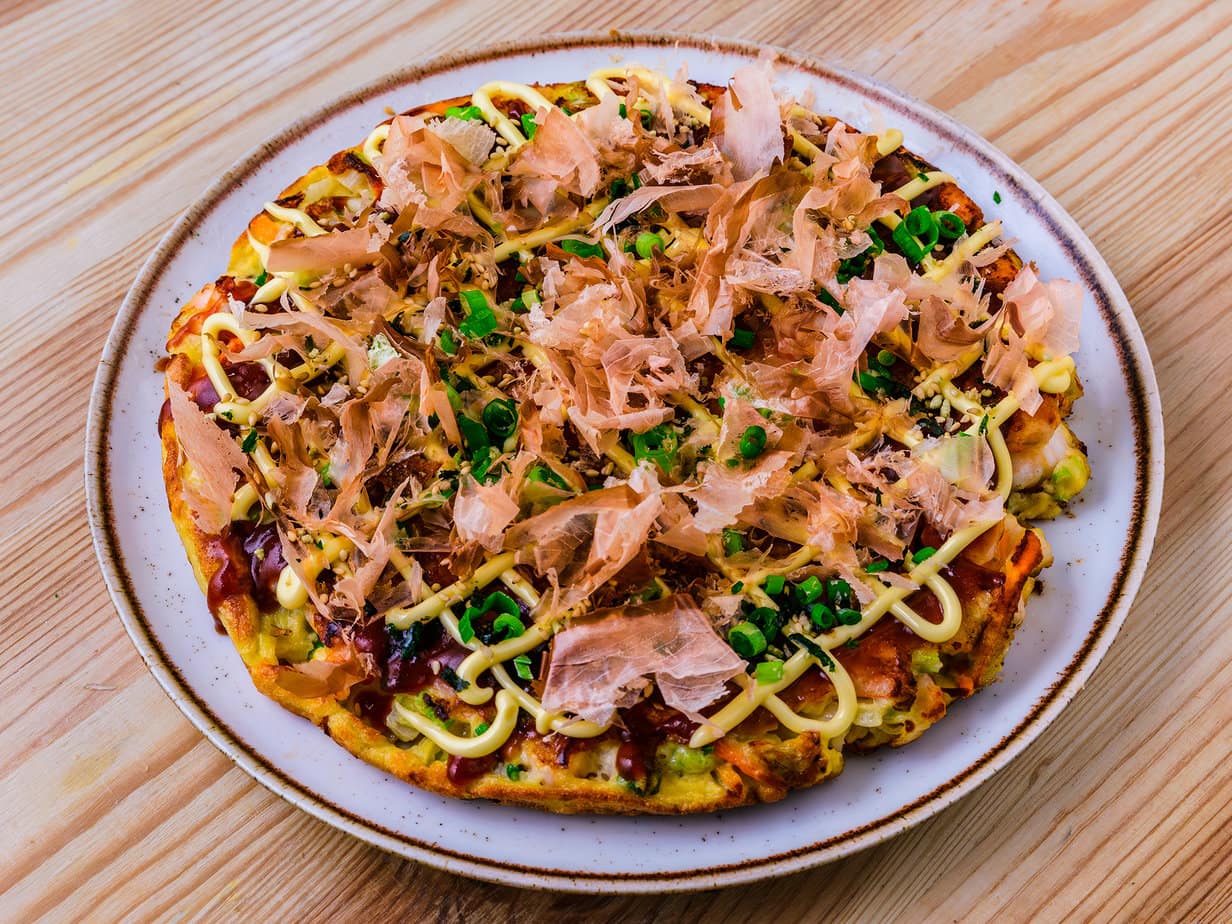
Authentic Japanese Okonomiyaki
Ingredients
- 70 g of Chinese cabbage thinly sliced
- 0.5 carrot peeled and thinly sliced
- 1.5 green onion thinly sliced
- 90 g flour all-purpose
- 0.25 teaspoon baking powder
- 2 eggs lightly beaten
- 90 g of dashi
- 0.5 teaspoon salt
- 0.25 teaspoon white pepper ground
- 200 g of shrimp peeled, deveined, and coarsely chopped
- 1 tablespoon oil vegetable
- 1 tablespoon of tenkasu tempura bits
Toppings
- 30 g of okonomiyaki sauce
- 1.5 tablespoon of Kewpie mayonnaise
- 1 tablespoon of Furikake
- 1 tablespoon of katsuobushi
Instructions
- In a large bowl, mix the cabbage, carrot, and green onions.
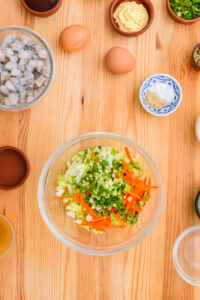
- In another bowl, whisk together the flour, baking powder, eggs, dashi, salt, and pepper.
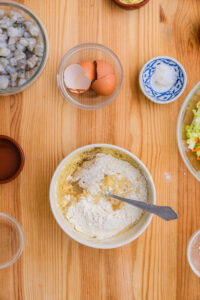
- Pour the egg mixture over the cabbage mixture and stir until the vegetables are completely and evenly coated.
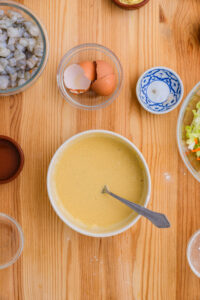
- Incorporate the shrimp into the batter. Add the tempura bits as well, if applicable.
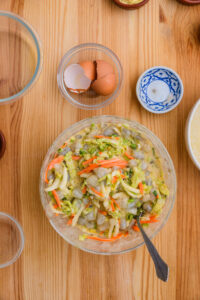
- Heat the oil in a 25 cm non-stick pan over medium heat. Swirl the pan so that the entire surface is coated with oil.
- When the oil is hot, pour all the mixture into the pan and cook for 7 to 8 minutes, until the pancake is almost set.
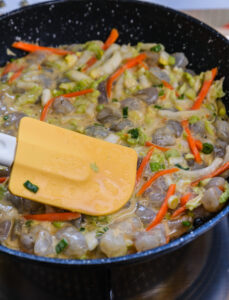
- Gently flip the pancake and cook for 4 to 6 more minutes, until golden and completely cooked through.
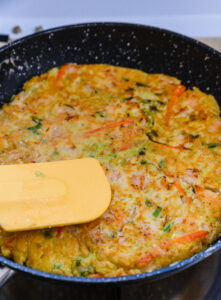
- Transfer the pancake to a large plate and let it cool for 5 minutes.
- Top the pancake with a drizzle of okonomiyaki sauce and kewpie or mayonnaise, then sprinkle with furikake and bonito flakes, if using.
